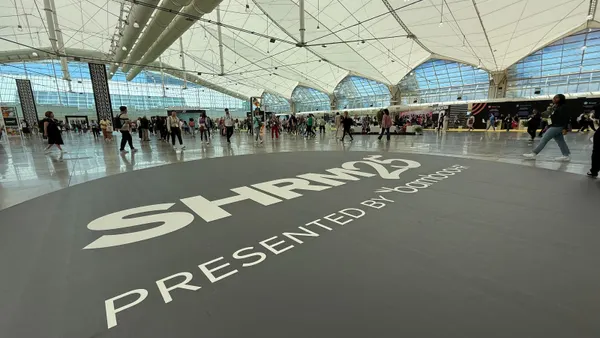Dive Brief:
- The gender pay gap for marketing, creative and design talent in the U.S. decreased significantly in 2022, according to the latest annual salary report from global staffing firm Aquent. In 2021, men were overall paid 16% more than women in the same job; in 2022, that gap shrunk to 2.7%, the report found.
- The gap is more persistent in tech and creative services, Aquent said. UX researchers were among the jobs that had the widest gap, with the median salary for men at $123,000, compared to $105,000 for women. But there were exceptions: Women in digital marketing manager jobs earned 19% more than men (with a median salary of $95,000, compared to $80,000 for men), and female SEO managers made about 14% more than their male counterparts (earning a median salary of $87,000, compared to the $76,000 for men).
- On average, ethnically diverse talent earned 2.25% less than their White counterparts in 2022, a slight improvement from last year. For some positions, the gap was still wide: Black, Indigenous and persons of color (BIPOC) in UX researcher jobs earned 12% less than White UX researchers. On the other hand, BIPOC employees holding SEO manager and data analyst roles earned significantly more than White workers in the same job (about 32% and 15%, respectively).
Dive Insight:
A growing number of employers are taking action on pay equity, new research is showing. Many employers have been influenced by the desire to “do the right thing;” others are concerned about mitigating the legal risk of unequal pay, a January report from WorldatWork and Fidelity investments found.
The exact reasons why the gender pay gap has decreased so dramatically aren’t clear, Rohshann Pilla, president of Aquent Talent, said in an email to HR Dive. “For the roles broken out by gender, we had an increase in the number of women entering salaries in the tool, and there was a larger increase in their salaries from 2021 to 2022,” Pilla noted. “I’d like to think that it’s more companies embracing pay equity, but it’s hard to specifically say that is the case.”
Digital marketing and SEO manager roles, the jobs where women and BIPOC employees significantly outearn men and White employees, “are very high in demand and have a low barrier to entry,” such as easily accessible tools and courses and often don’t require a degree, Pilla pointed out. This “can level the playing field and open the door to more underrepresented groups,” she explained.
The sample size for the BIPOC employees and SEO managers wasn’t that large, “so I don’t know that we can draw any significant conclusions as to what is behind the variance. It could simply be a factor of the individuals that entered data for those roles,” Pilla clarified.
Underrepresentation in positions covered by the Aquent report might also account for why female and BIPOC employees have yet to reach overall pay parity with men and White workers. “Diversity in the advertising/marketing industry is now 32%, well short of the 41% diversity in the U.S. population. As companies continue to focus on creating a more diverse and inclusive workplace, the gap will hopefully continue to close,” Pilla said.
She highlighted four takeaways from the report: First, although salaries increased by an average 1.1% across the board, due to a 7.7% annual inflation rate, employees’ real wages (and buying power) has significantly declined.
Second, companies can tap into a broader, more diverse talent pool by adopting a “work-from-anywhere” approach, Pilla said. For example, a UX lead who makes $184,750 in San Francisco and New York, would earn $163,000 in San Diego and Atlanta, and $155,000 in Miami or Phoenix.
Third, the gender and ethnicity pay gaps continue to be significantly large in UX/UI roles.
Fourth, “The metaverse is on the horizon. And with it comes a wage of demand for new skills needed to build immersive virtual reality experiences,” Pilla pointed out. So does the potential for much higher earnings: A social media manager who upskills to a community manager could earn $50,000 more per year, she said.
Aquent’s report is based on more than 19,000 actual salaries that marketing, creative and design talent entered into a salary tool, Pilla explained. The tool automatically updates averages as new salaries are entered.











